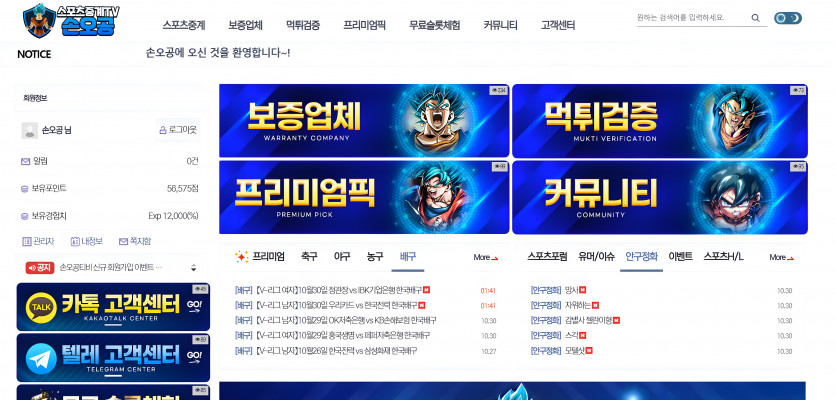Soccer Broadcasting: A Journey Through History, Presented by Sonogong TV
작성자 정보
- 손오공 작성
- 작성일
컨텐츠 정보
- 118 조회
- 목록
본문
Early Beginnings: The Rise of Radio Broadcasting
The early 20th century marked a transformative period for sports communication, particularly in the realm of soccer. As the 1920s approached, radio technology was burgeoning, providing an innovative medium for transmitting live events to the masses. The first broadcasts of soccer matches emerged during this era, enabling fans to experience the thrill of the game from the comfort of their homes. The ability to listen to games as they unfolded was revolutionary, significantly changing how fans engaged with the sport.
Initially, soccer broadcasts were sporadic and often experimental. Radio stations began by airing local matches, providing brief summaries and updates. However, as the technology improved, more comprehensive play-by-play commentaries became possible. These broadcasts captured the excitement of the game, allowing listeners to visualize the action through the commentary. Renowned broadcasters quickly emerged, developing a specific style that resonated with audiences and helped build a loyal following. This period also saw the establishment of dedicated sports programs, which included soccer commentary as a central feature.
The rise of radio broadcasting significantly contributed to the growing popularity of soccer during the 1920s and 1930s. It expanded the reach of the sport beyond local enthusiasts, engaging fans who could not physically attend the matches. Soccer clubs recognized the medium's potential and began to leverage radio broadcasts for promotional purposes, ultimately leading to increased attendance at games. Technological challenges, such as interference and the quality of sound transmission, remained prevalent. However, the allure of live commentary drew listeners, making radio one of the primary sources of soccer content during this transformative period.
The Golden Age of Television: Transforming Soccer Viewership
The mid-20th century marked a pivotal transformation in the broadcasting of soccer, transitioning from radio waves to the visual medium of television. The first live televised soccer match aired in 1937 in the United Kingdom, capturing the attention of viewers and setting the stage for a new era of sports broadcasting. This milestone not only redefined how fans experienced soccer but also significantly broadened the sport's reach and appeal. By the 1960s, major sports networks began to emerge, with entities such as BBC and ABC dedicating their resources to bringing live soccer coverage into homes across millions of households.
Television fundamentally reshaped the culture surrounding soccer. The visual nature of the medium made it possible for fans to engage with players and teams in a more intimate manner, building a stronger emotional connection. As televised matches became more common, audiences grew exponentially, welcoming a new generation of passionate supporters. Consequently, clubs and leagues realized the potential commercial benefits that could arise from engaging with a larger fan base. Sponsorship deals, merchandise sales, and ticket revenues saw a significant increase, marking the commercialization of the sport in an unprecedented way.
Furthermore, notable broadcasting personalities emerged during this golden age, helping to enhance the viewing experience. Commentators like Kenneth Wolstenholme and Jimmy Hill became household names, providing insightful commentary and analysis that further captivated audiences. The introduction of innovative broadcasting techniques, such as slow-motion replays and multiple camera angles, elevated the viewer's experience, allowing fans to savor key moments during matches. As television evolved, it not only transformed the way soccer was consumed but also laid the groundwork for the international celebrity status that players and coaches enjoy today. This era was instrumental in cementing soccer’s place in popular culture, setting a trajectory that would only continue to expand in the decades to follow.
The Digital Revolution: Online Streaming and Its Impact
The advent of the internet has revolutionized many industries, and soccer broadcasting is no exception. In the 21st century, online streaming platforms have profoundly transformed how fans access and engage with soccer content. Services such as ESPN+, DAZN, and Peacock have emerged, offering viewers the ability to stream games on demand and live, catering to the increasing preference for flexibility in viewing habits. This shift from traditional cable television to internet-based platforms reflects a broader trend in consumer behavior, where audiences are increasingly seeking customizable content experiences.
Moreover, the rise of online streaming services has resulted in a significant change in viewer habits. Fans are now able to watch matches on multiple devices, including smartphones, tablets, and smart TVs, allowing for greater accessibility compared to conventional broadcasting methods. This democratization of access means that fans from various socio-economic backgrounds can enjoy soccer games, regardless of geographical location. The availability of soccer content has also led to the engagement of previously underrepresented segments of the fanbase, fostering a more inclusive environment for soccer enthusiasts worldwide.
Social media has also played a pivotal role in this digital revolution. Platforms such as Twitter, Instagram, and TikTok allow fans to share real-time highlights, analysis, and personal reactions during live matches, breaking down the barriers that once existed between broadcasters and audiences. This two-way communication channel not only enhances fan engagement but also serves as a marketing tool for clubs and leagues alike, further solidifying the relationship between soccer entities and their supporters.
The implications of streaming on traditional broadcasting models are significant. As viewers continue to migrate towards digital platforms, rights acquisition strategies have had to adapt to this new landscape. Sports networks are actively redefining their strategies in order to retain audience attention in an increasingly saturated market. Consequently, the way soccer is broadcasted and consumed is likely to continue evolving, with streaming at the forefront of this transformation.
The Future of Soccer Broadcasting: Trends and Predictions
The landscape of soccer broadcasting is undergoing a transformative shift, driven by technological advancements and changing consumer preferences. As we look toward the future, several trends are poised to redefine how fans engage with their favorite sport. Augmented Reality (AR) and Virtual Reality (VR) are at the forefront of this evolution. These technologies promise to deliver immersive experiences that elevate the viewing experience, enabling fans to feel as if they are part of the action, regardless of their physical location. By integrating AR overlays into broadcasts, viewers can access real-time statistics and player information directly in their line of sight, enriching their understanding of the game.
Artificial Intelligence (AI) is also set to play a pivotal role in streamlining content creation and personalization. AI algorithms can analyze vast amounts of data to deliver customized highlights and updates tailored to individual preferences, ensuring that enthusiasts won't miss a moment of their team's action. Moreover, AI-driven insights can assist in enhancing coaching strategies, helping teams improve their performance on the field while simultaneously engaging fans with data-driven storytelling.
Blockchain technology emerges as another disruptor in the sports broadcasting domain. By enabling secure and transparent transactions, blockchain could reshape how media rights are negotiated and enforced. Fans may find themselves owning shares in broadcasting rights through tokenization, fostering a more direct relationship with the teams they support. This decentralization could lead to novel ways for clubs to monetize their content while ensuring that fans have a greater say in how it is distributed.
As consumer behavior continues to shift towards on-demand content, traditional broadcasting methods may take a back seat. The next decade will likely see an increase in streaming services, allowing fans to curate their viewing experiences in real time. In this rapidly evolving environment, the relationship between broadcasters, teams, and fans is expected to become more interconnected, resulting in innovative strategies that cater to this dynamic community.
In the realm of sports streaming, finding a reliable and high-quality service for free sports streamings(called in korean as 무료스포츠중계) can be a daunting task. At Sonogong TV(called in korean as 손오공티비 or 손오공TV), we pride ourselves on providing an exceptional viewing experience for sports enthusiasts. Our commitment to delivering real-time free sports streamings(무료스포츠중계) or free overseas sports streamings(해외스포츠중계) without the burden of subscription fees makes us the go-to platform for anyone looking to enjoy their favorite games and events.

